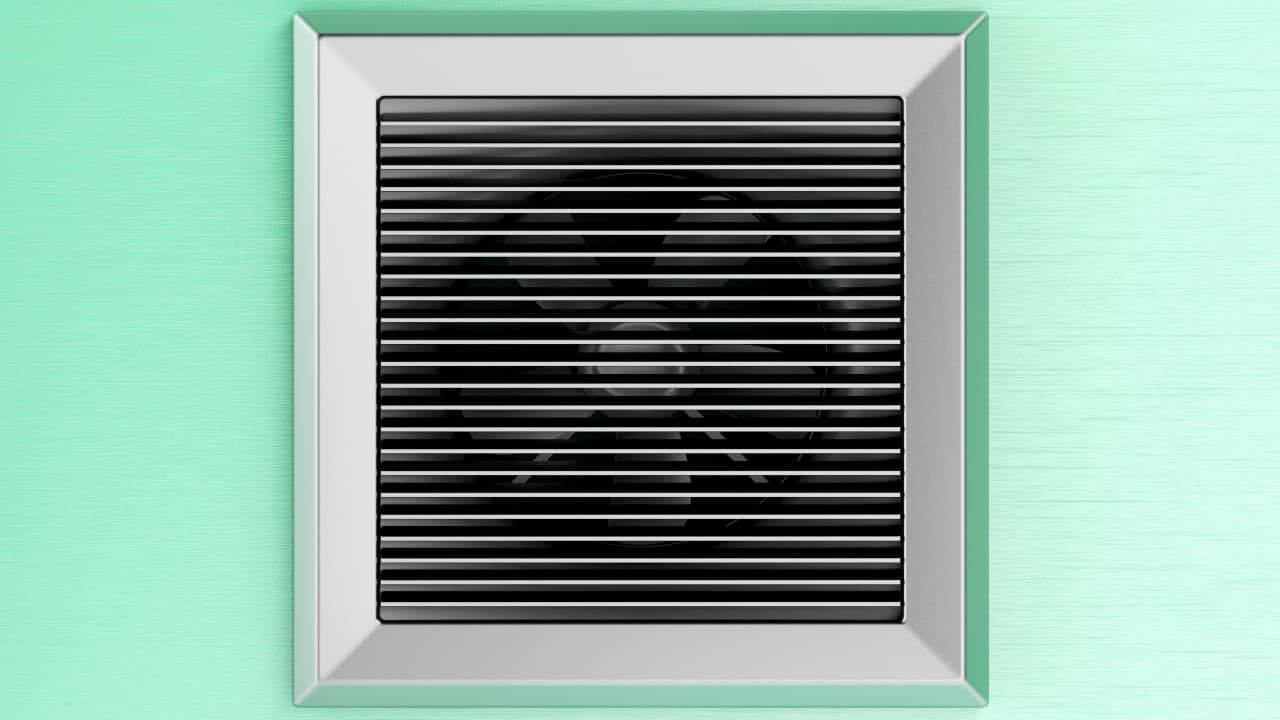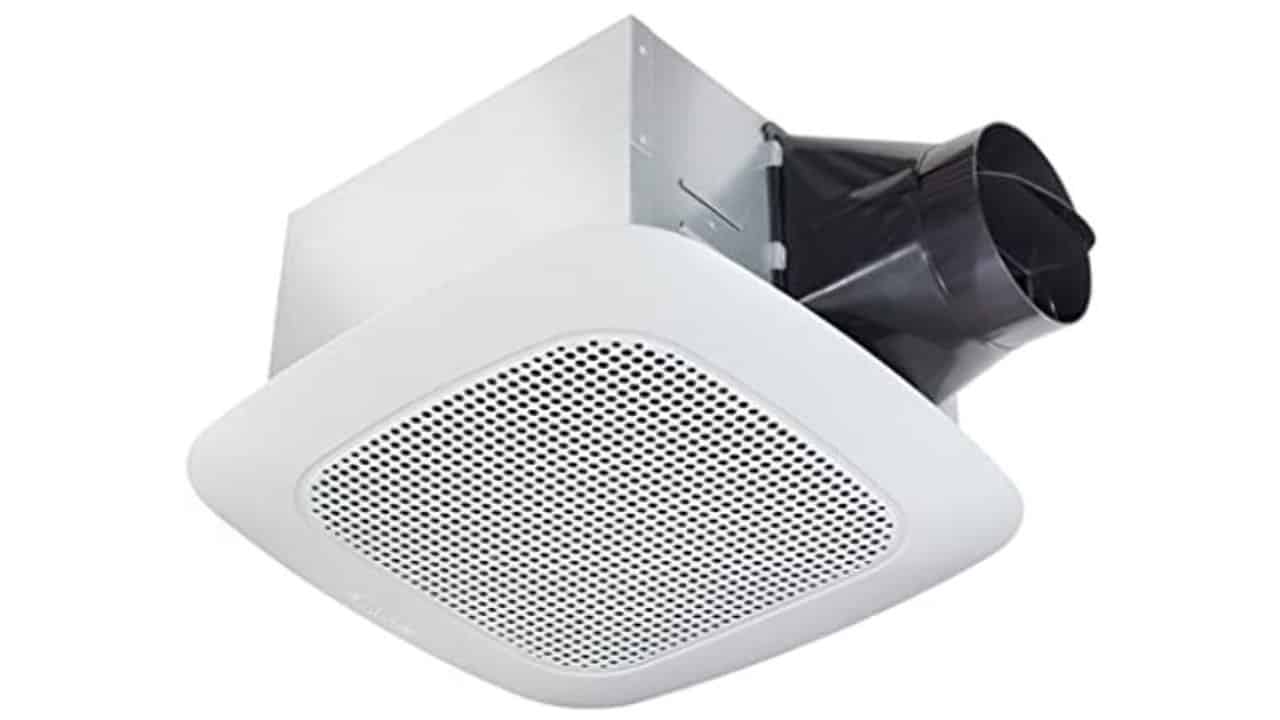When shopping for a bathroom exhaust fan, the last thing you want is to end up with a model that is too weak or too powerful for your needs.
An inefficient exhaust fan simply won’t be able to remove the excess humidity and stale air from your bathroom. Conversely, an overly powerful model can be needlessly loud and also take an unnecessary toll on your budget.
If you’d like to avoid finding yourself in situations such as these, it’s vital that you correctly size your new bathroom fan. The following bathroom exhaust fan sizing chart will help you do exactly that:
Contents
What is CFM?
When we’re talking about the “size” of these appliances, we’re not talking about their physical dimensions. Instead, we’re referring to their CFM ratings. If you’ve never heard of this term before, it stands for cubic feet per minute and the job of this rating is to tell you how much air a particular bathroom exhaust fan can move during one minute. Most models have a CFM rating of between 50 and 130, although very powerful, 200 CFM-rated units are also available.
Calculating the necessary CFM rating for your bathroom can be done in a couple of different ways. However, it should be pointed out that all of these methods aim for about 8 air changes every 60 minutes. In other words, all air inside a bathroom needs to be completely replaced at least 8 times during one hour.
Another thing worth mentioning is that the door of the bathroom really needs to have an adequate gap on the bottom. If this gap doesn’t measure at least five eights (⅝) of an inch, the exhaust fan is going to have a really hard time properly ventilating the bathroom due to the lack of sufficient makeup air.
4 Methods of Sizing a Bathroom Exhaust Fan
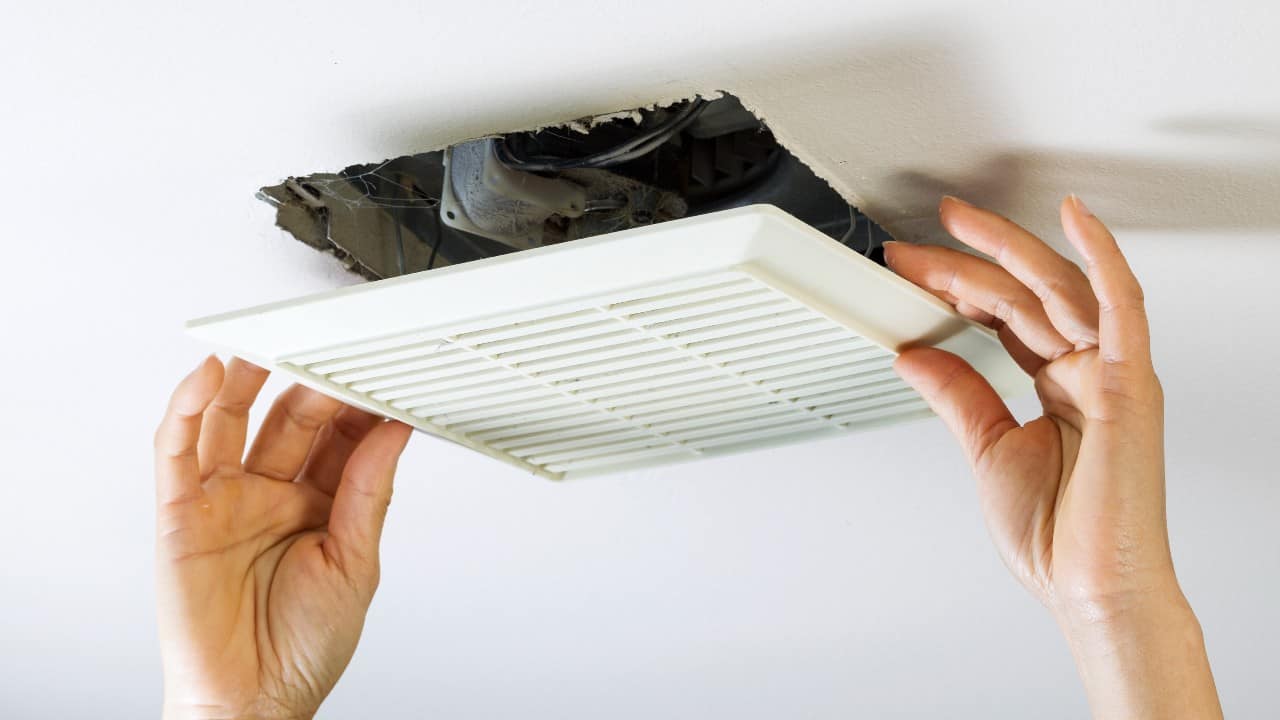
A bathroom exhaust fan can be sized in 4 different ways. These calculations are based on the ceiling height, floor area, as well as extra spaces such as shower or toilet. Here’s a short but comprehensive breakdown of each of these methods in the form of a chart:
| CFM Calculation | Minimum CFM |
| Large bathrooms (more than 100 square feet) | Add together every fixture:
100 CFM – Jacuzzi tub 50 CFM – Bathtub 50 CFM – Shower 50 CFM – Toilet |
| Regular-sized bathrooms (less than 100 square feet) | 1 CFM per square foot |
| Tall-ceiling bathrooms |
|
| Enclosed areas | 50 CFM (one more bathroom exhaust fan) |
Now, let’s go over each one of these calculations in more detail:
#1 – CFM Calculation for Large Bathrooms
Do you have a bathroom whose square footage is well over 100? If that’s the case, it is recommended that you, instead of using the bathroom’s floor area for the calculation, base the CFM rating on the number of plumbing fixtures inside your bathroom.
This is very easy when it comes to bathtubs, showers, or toilets – you just have to assign 50 CFM to each of these fixtures. For jacuzzi tubs, you will have to add 100 CFM. So, to recap:
- 100 CFM – Jacuzzi tub
- 50 CFM – Bathtub
- 50 CFM – Shower
- 50 CFM – Toilet
So, for example, those with a jacuzzi tub, a shower, and a toilet would need 200 CFM of air-moving power to properly ventilate their bathrooms. This can be tackled in two different ways – by purchasing just one, very powerful 200 CFM bathroom exhaust fan or by getting several weaker models that add up to 200 CFM.
#2 – CFM Calculation for Regular-Sized Bathrooms
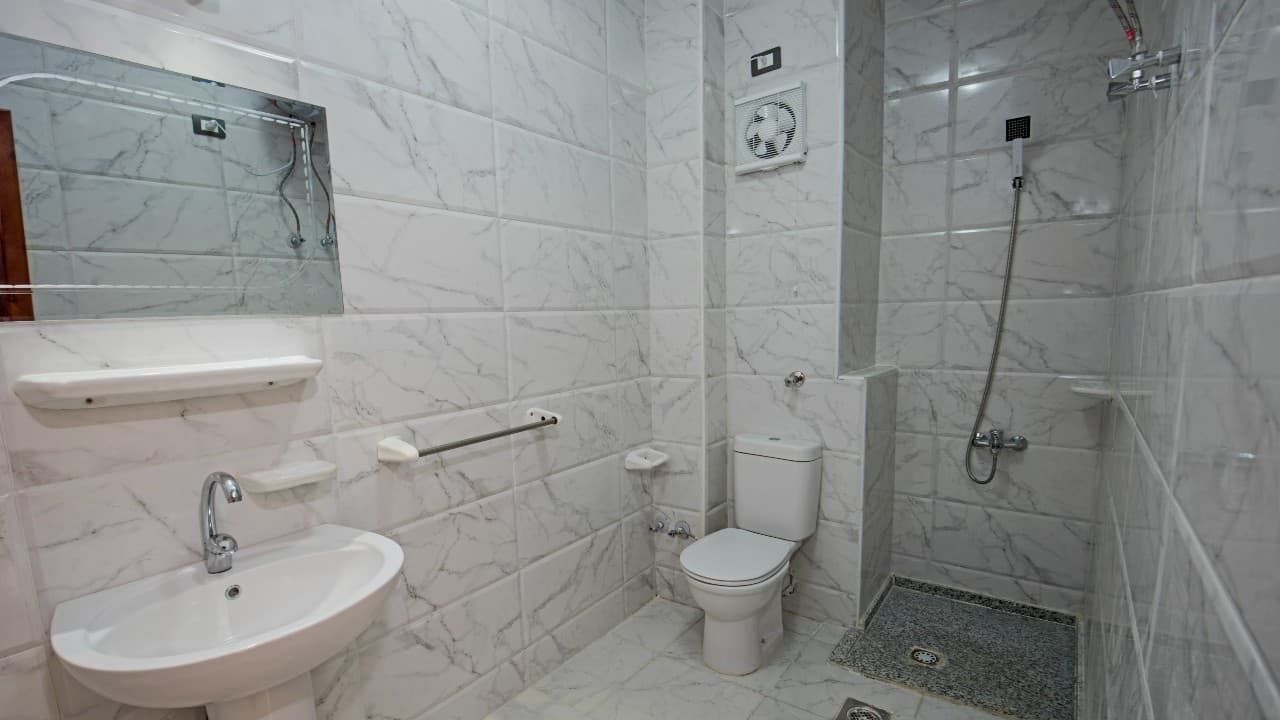
Most people have regular-sized bathrooms and for them, sizing an exhaust fan is quite easy – they just have to use 1 CFM per 1 square foot of the bathroom floor area. And to calculate this area, measure and multiply the width and the length of your bathroom. Don’t forget that you need to measure the entire floor area, including the bathtub/shower sections.
This CFM calculation for regular-sized bathrooms, which uses the “1 square foot = 1 CFM” formula, should be applied to bathrooms that are no larger than 100 square feet. So, for example, if you have a bathroom whose square footage stands at 90, you’ll want to get an exhaust fan whose CFM rating is at least 90 as well.
If your bathroom is very small, i.e. if its square footage is less than 50 (a 40 sq. ft. bathroom, for example), you’ll still want to obtain an exhaust fan whose CFM rating is at least 50. Also, don’t forget that you can feel free to go a bit over the advised minimum of 1 square foot = 1 CFM.
While a slightly overpowered (~20%) bathroom exhaust fan won’t really cause any issues, an underpowered one undoubtedly will. To put it simply, it just won’t be able to properly and efficiently remove moist air from your bathroom.
Those worried about the noise should look into models whose Sone rating is 1.5 or lower. If you want a genuinely noiseless appliance of this type, try to get a model with a 0.3 Sone rating – such exhaust fans are truly whisper-quiet. Make sure to check out my reviews of the market’s best-rated quiet bathroom fans if you want your unit to make as little noise as possible while in operation.
#3 – CFM Calculation for Tall-Ceiling Bathrooms
In addition to the regular CFM calculation described above, those who have regular-sized bathrooms with tall ceilings need to add an extra factor into their assessment.
Namely, most regular-sized bathrooms have a ceiling height of about 8 feet. If the ceiling height of your bathroom stands at 10 or 12 feet, on the other hand, you will need to take this increased vertical space into account. Here’s how to do that:
- Step #1 – Multiply the ceiling height by floor square footage (ceiling height x floor square footage).
- Step #2 – Divide by 60. This number stands for minutes (60 minutes = 1 hour).
- Step #3 – Multiply by 8. This number stands for the number of air changes. As I’ve already said, all of these methods aim for about 8 air changes every 60 minutes.
Here’s an example: If you have a bathroom with a floor area 110 square feet and the ceiling height of 11 feet, you measure it like this:
- Step #1 – 11 feet x 110 square feet = 1,210
- Step #2 – 1,210 / 60 = 20.16
- Step #3 – 20.16 x 8 = 161.28 CFM
So, for a bathroom of this size and ceiling height, you would need two exhaust fans that add up to 160 CFM or a single 160 CFM-rated model. Also, as I already said, you can get an appliance whose CFM rating is slightly (about 10-20%) higher than necessary and you won’t experience any issues. However, going with a model whose CFM rating is below 160 would definitely be inadvisable in this scenario.
#4 – CFM Calculation for Enclosed Areas
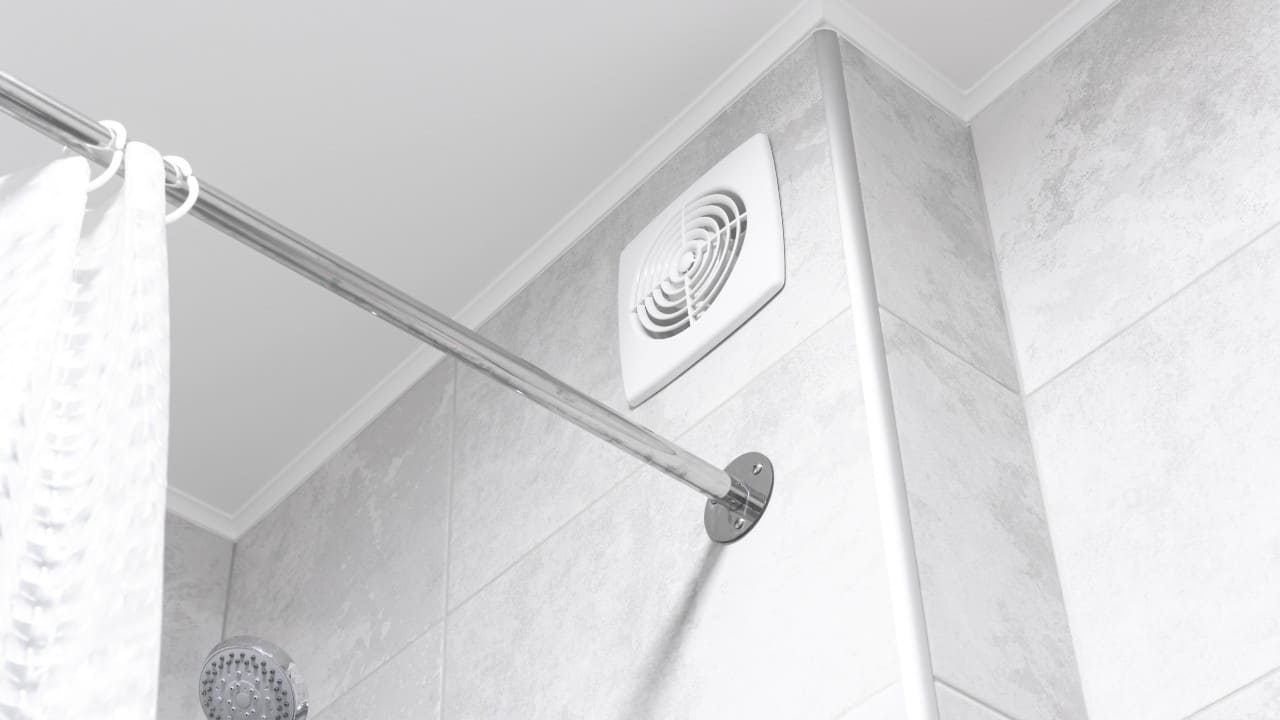
Does your bathroom have an enclosed area with a closet or a shower? If that’s the case, the best course of action would be to buy an additional exhaust fan just for that section of your bathroom. Due to the fact that these areas are, well, enclosed, i.e. they have their own doors, it can be very challenging for a single bathroom exhaust fan to adequately ventilate these sections as well.
If the shower of your bathroom is fully enclosed, the exhaust fan you’ll be using for it also has to be GFCI-connected. Also, one thing I feel I should point out here is that almost all bathroom closets I’ve ever seen had exhaust fans with lights, so installing one of these appliances into your bathroom closet area certainly isn’t a wild idea. And since most of the enclosed sections inside bathrooms are tiny, getting a small, 50 CFM-rated model for yours is bound to do the trick.
However, some people just plain refuse to install a secondary exhaust fan into their bathrooms. If you count yourself among such individuals, don’t forget to at least leave the door of your bathroom partially open throughout the day. This will give your primary vent fan a chance to do its job.
Frequently Asked Questions
Here are a couple of questions frequently posed by people confused by bathroom exhaust fan sizing:
Are There Any Bathroom Exhaust Fans With Multiple CFM Settings?
Yes, there are. Panasonic is undoubtedly the most well-known name in this department, with a lot of their bathroom exhaust fans having more than just one CFM setting. In other words, a vent fan of this type features a speed selector that allows the owner to easily switch between different air-moving speeds, such as 50 / 90 / 130 CFM. These kinds of appliances are extremely versatile, which is also why they often cost a lot more than their single-speed cousins.
Bathroom exhaust fans equipped with variable-speed motors also deserve a mention. When first turned on, a unit of this type will start off on a slow-speed setting. However, if / when it detects the presence of high moisture in the air, a vent fan with a variable speed engine will switch to a higher speed setting. The feature that allows it to do something like this (apart from its variable speed motor, of course) is the humidity sensor.
If you’re interested in having a fan that automatically switches between different speeds depending on the current amount of moisture in the air, check out my article on the Best Bathroom Exhaust Fans With Humidity Sensors.
What About Noise? Aren’t Fans With a High CFM Rating Loud?
The loudness of these appliances is measured in Sones. Any exhaust fan with a Sone rating of around 1.0 is a quiet exhaust fan. Models whose Sone ratings are really low – around 0.3 – are so quiet that they often sport indicator lights so that their owners can tell whether these devices are currently in operation or not. Conversely, a model with a Sone rating of 3.0 or 4.0 will be quite loud.
Usually, a bathroom exhaust fan with a high CFM rating will also have a high Sone rating, although this isn’t always the case. Premium-quality appliances of this type are often equipped with state-of-the-art engines that do a great job of reducing the overall level of noise. Check out my article on bathroom fan sones if you’d like to know more about this topic.
Can CFM Be Affected by the Duct Size?
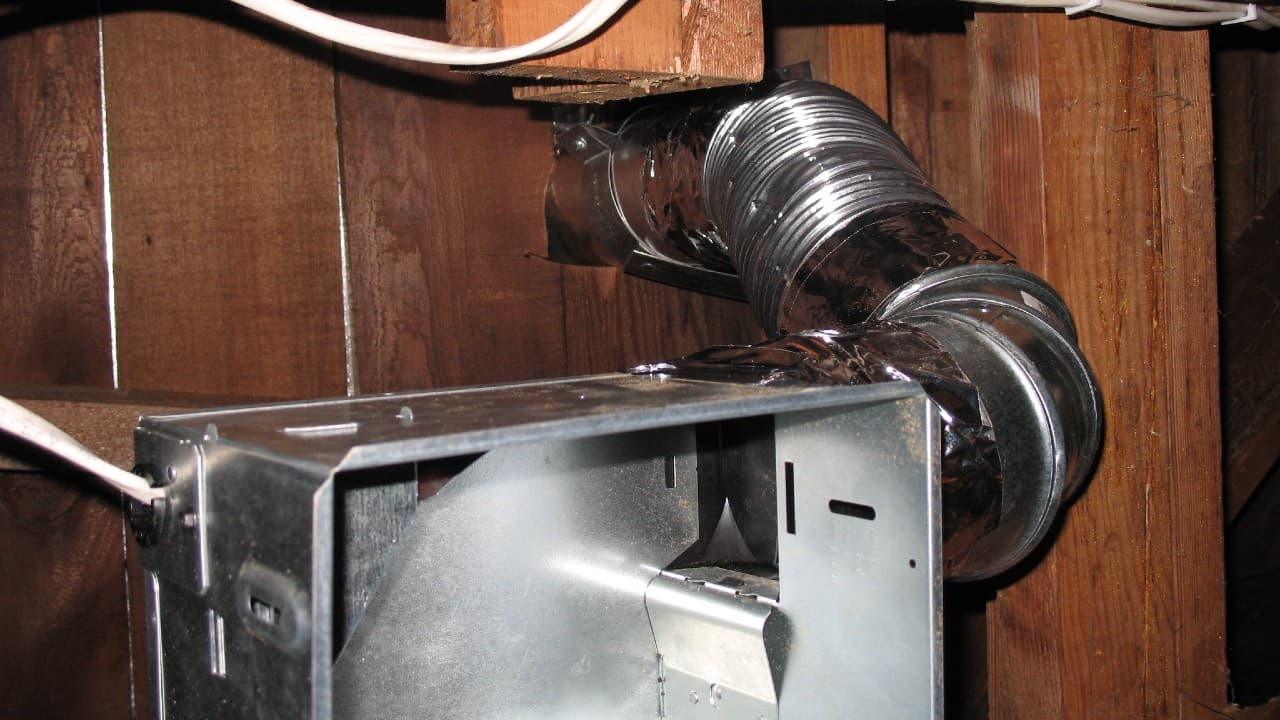
Photo by Ben Loomis via Flickr (CC BY 2.0)
Yes! The duct’s quality can and usually does affect the bathroom fan’s CFM output. On the packaging of the newer appliances of this type, you will usually find info on the necessary vent pipe size that the fan needs to be used with – 3”, 4”, or 6”. As far as I’m concerned, the best bathroom fan ducts are the ones that are pre-insulated. That’s because they keep condensation at bay and also help reduce noise.
If you have a 3” duct installed but the bathroom exhaust fan you’re looking to buy is rated for 130 CFM with a 6” duct, you can be sure that the appliance is going to have a decreased CFM performance. Besides the duct size, other things that can impact the CFM are the duct material, its overall length, as well as the number of bends it has.
Can a Bathroom Exhaust Fan Be Too Powerful?
As I already stated in the intro, yes, the devices of this type can be too strong. If a particular model has a CFM rating that is higher than necessary for your bathroom, there’s a pretty good chance it will cause the so-called back-drafting. This is something that occurs when a home has gas appliances and an overly powerful ventilation device creates negative air pressure.
Instead of going outside of the house, the harmful gases produced by the gas appliances – such as carbon monoxide – can go back inside the house due to this negative air pressure. The easiest way to prevent something like this from happening is by simply installing an exhaust fan whose CFM rating is 10-25% higher than recommended.
Now that you know everything about CFM, you can check out our list of best bathroom exhaust fans on the market.
